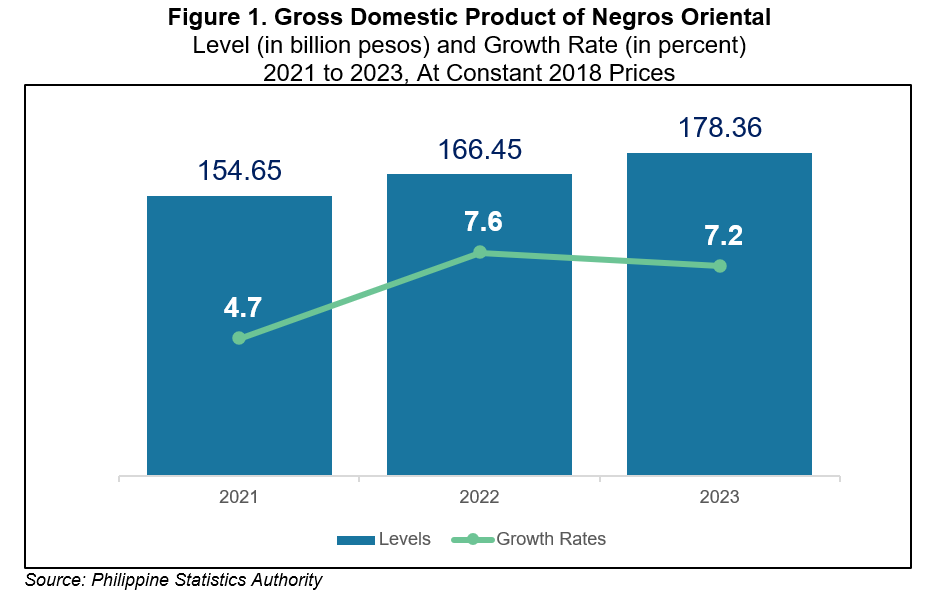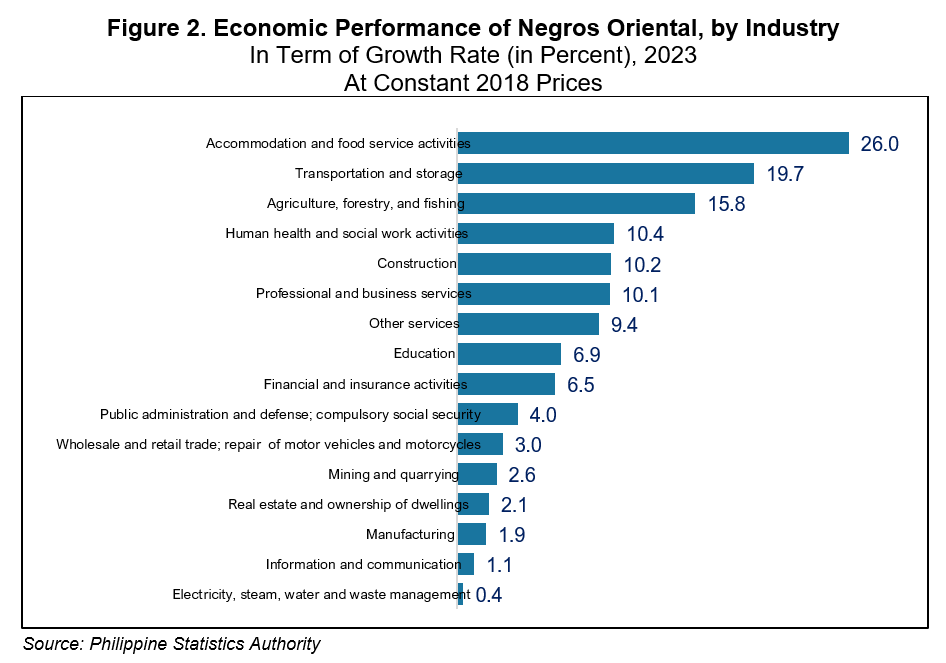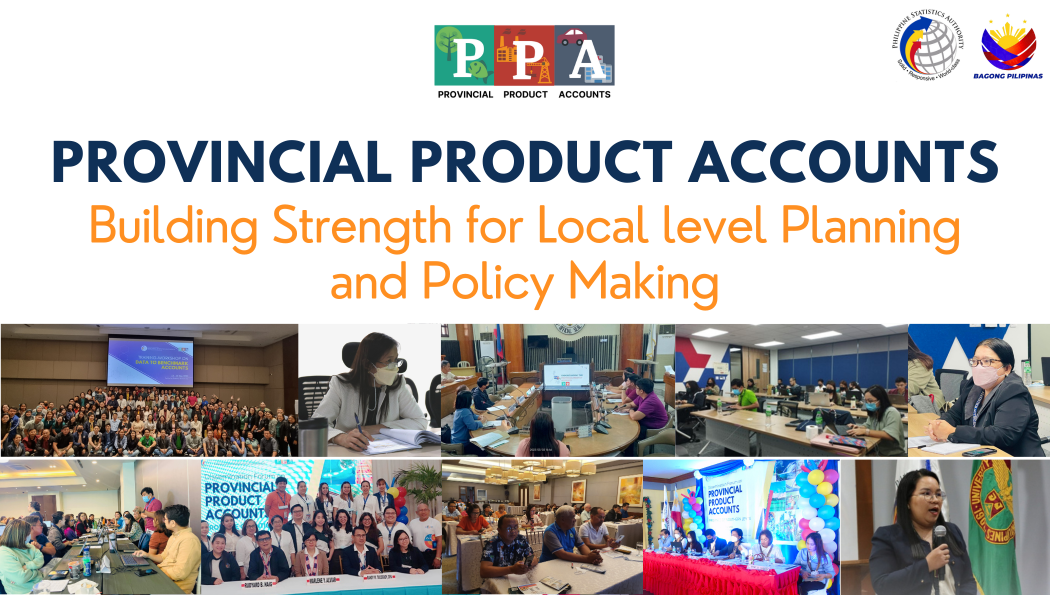Provincial Product Accounts (PPA)
Negros Oriental's Economy Expands by 7.2 Percent in 2023
Release Date:Reference Number: 2024-PR46-023The economy of Negros Oriental grew by 7.2 percent in 2023 from its 2022 level, a slowdown from the 7.6 percent expansion recorded in the previous year. The Gross Domestic Product (GDP) of Negros Oriental was estimated at PhP 178.36 billion in 2023. (Figure 1)

Among the 16 production industries, the fastest growth was observed in Accommodation and food service activities at 26.0 percent. It was followed by Transportation and storage at 19.7 percent and Agriculture, forestry, and fishing at 15.8 percent. On the other hand, Electricity, steam, water and waste management experienced the slowest expansion at 0.4 percent. (Figure 2)

Negros Oriental was the fourth largest economy among the provinces and Highly Urbanized Cities (HUCs) in Central Visayas, contributing 12.9 percent to the Gross Regional Domestic Product estimated at PhP 1.38 trillion in 2023.
Full data series, charts, and data visualizations on the results of the Provincial Product Accounts (PPA) of Negros Oriental can be accessed at the PPA landing page of the Philippine Statistics Authority (PSA) (psa.gov.ph/statistics/ppa), and the PSA Regional website (rsso07.psa.gov.ph/statistics/ppa).
(SGD.)
ARIEL T. FORTUITO
Chief Statistical Specialist
Attachment Size  2024-PR46-023
2024-PR46-023649.13 KB





